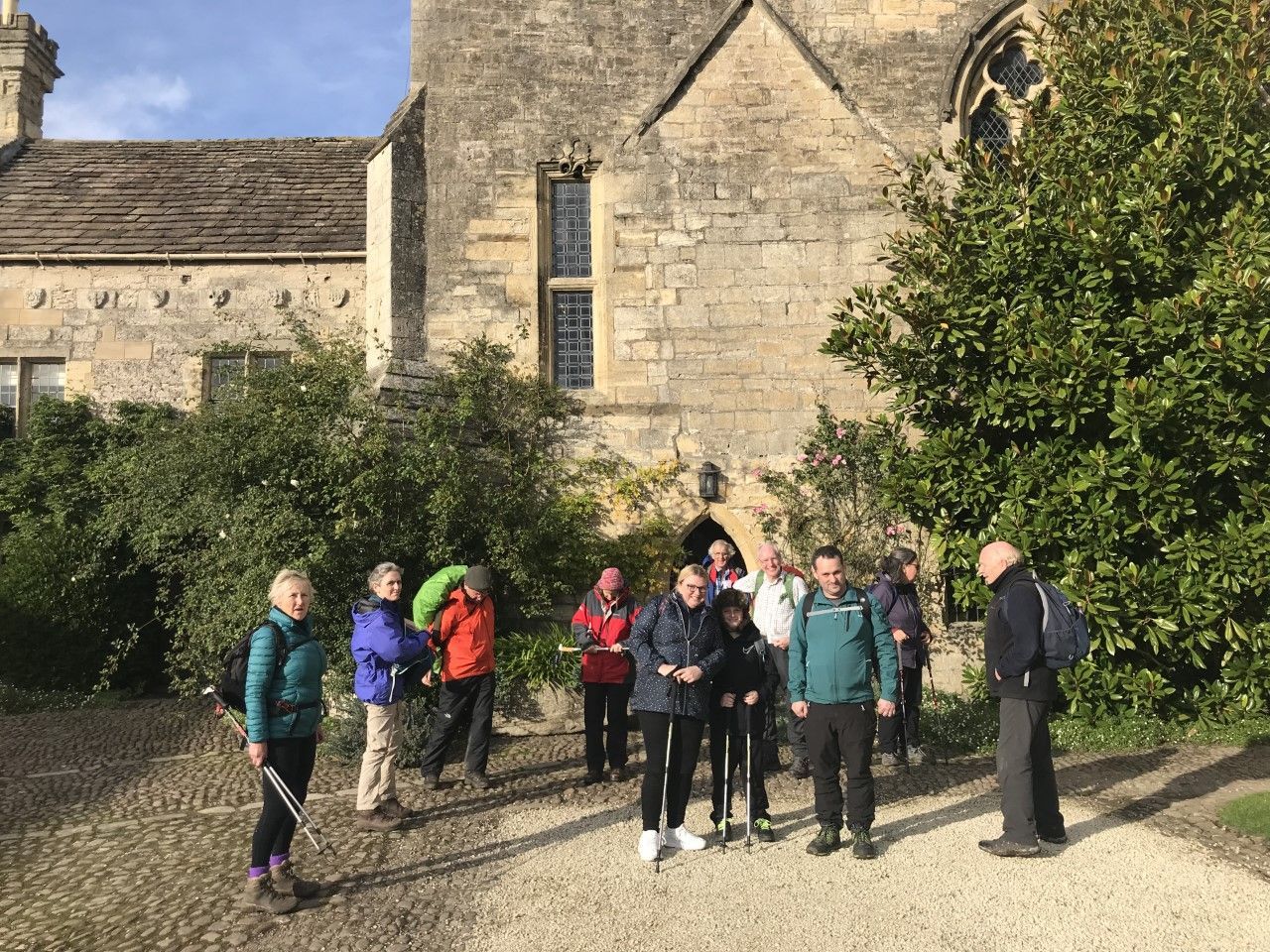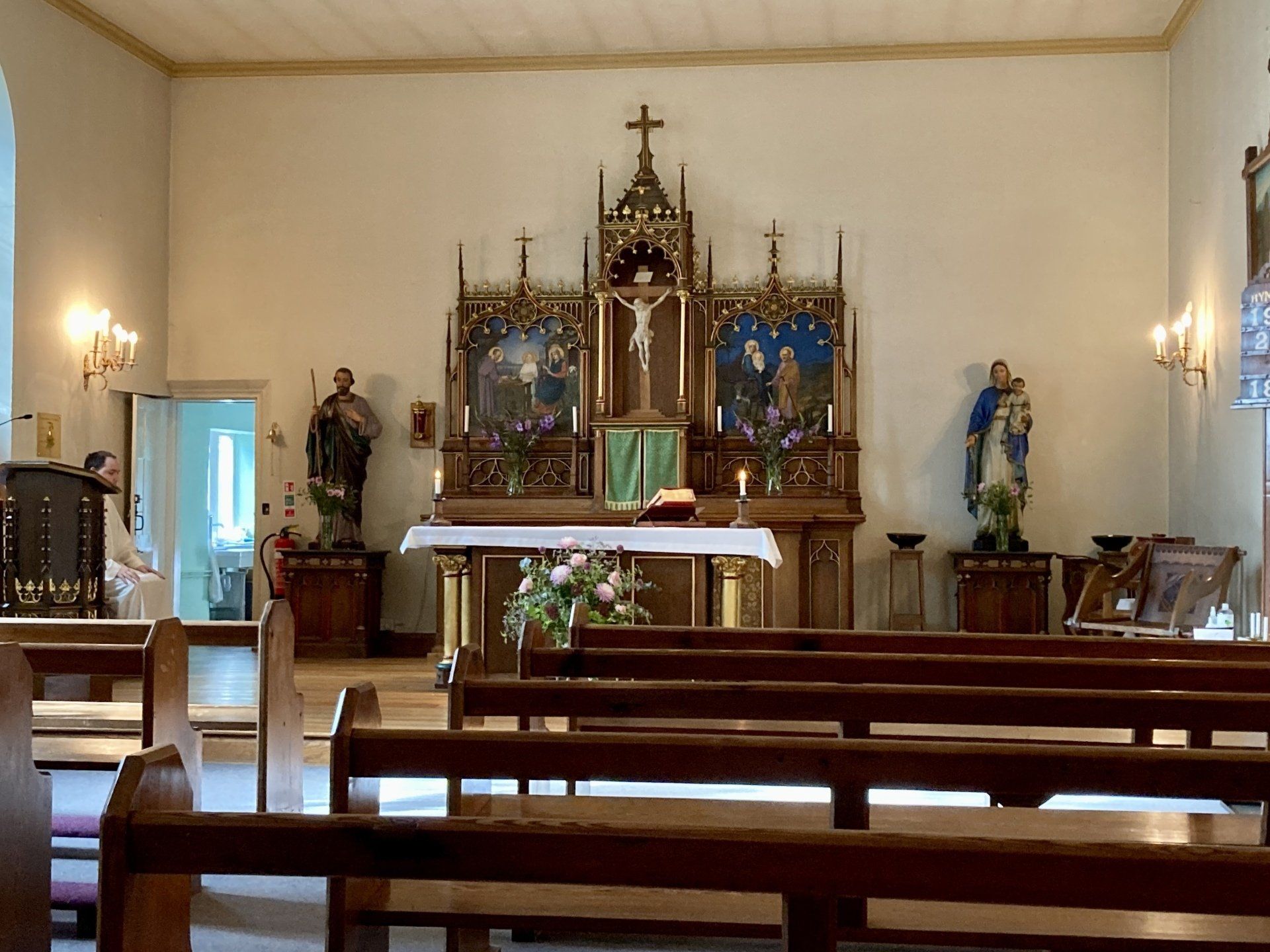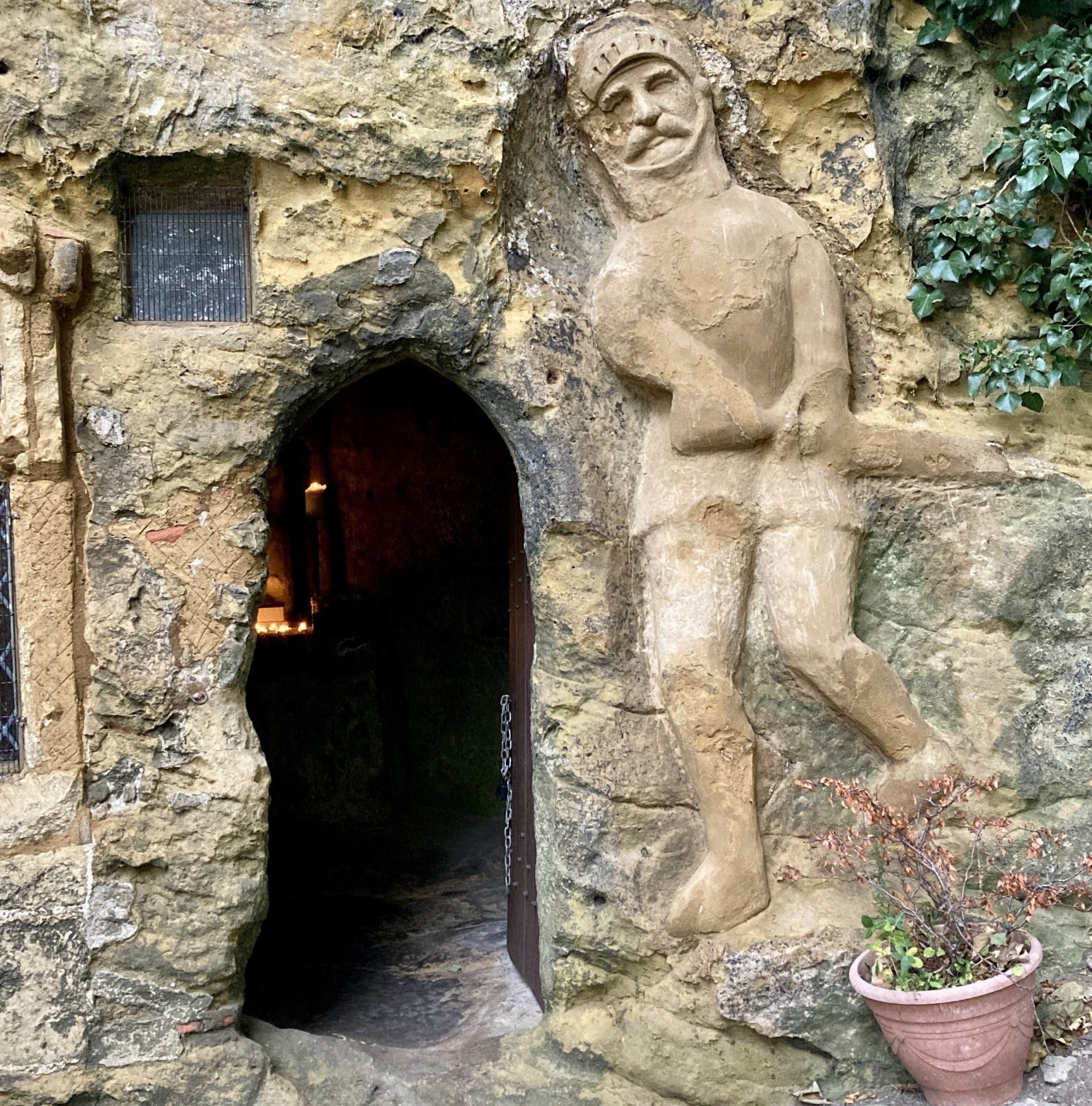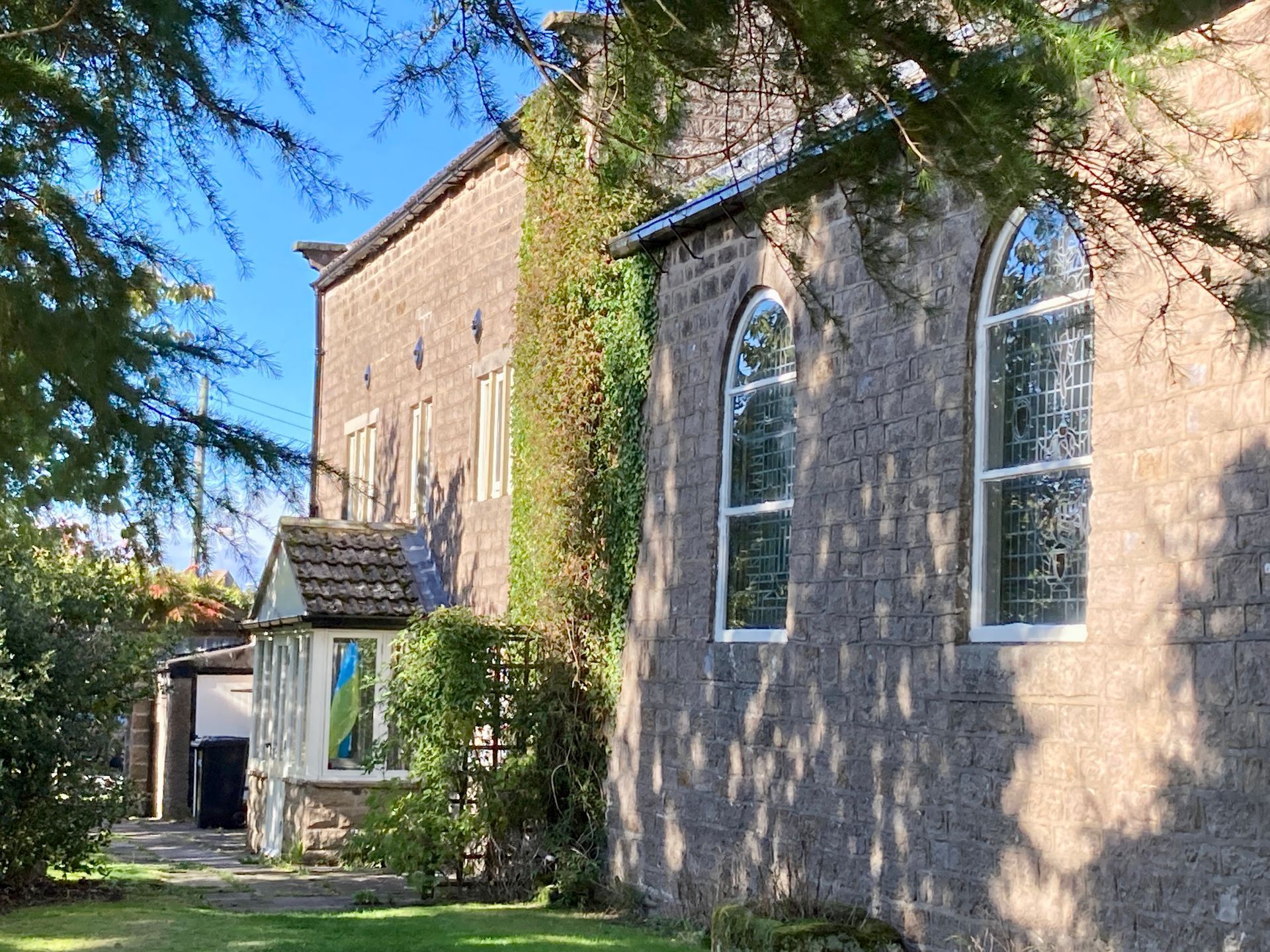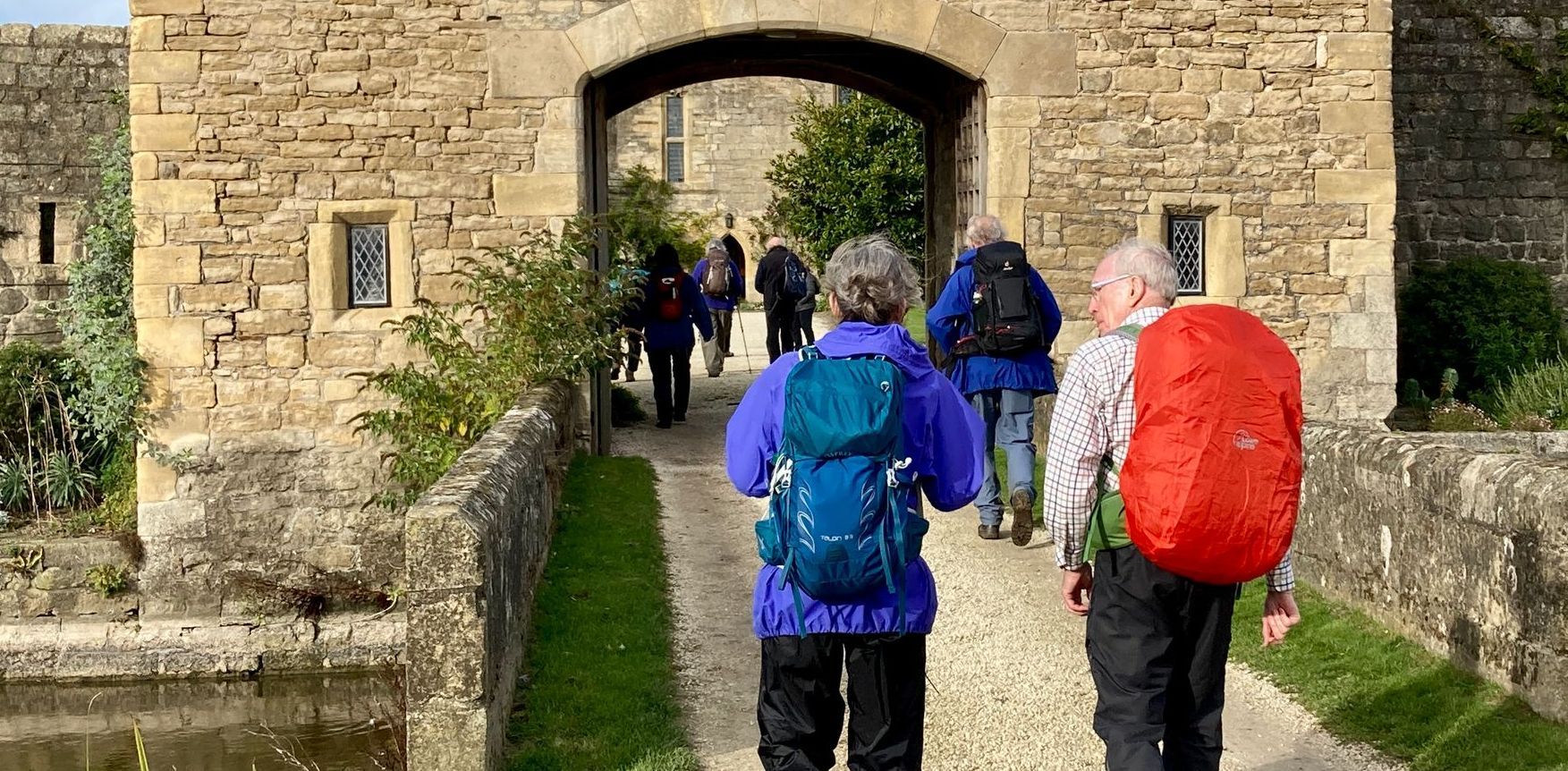The St Wilfrid's Way
A Pilgrim Way for the Diocese of Leeds from the Cathedral Church of St Anne, Leeds to to the Church of St Wilfrid in Ripon
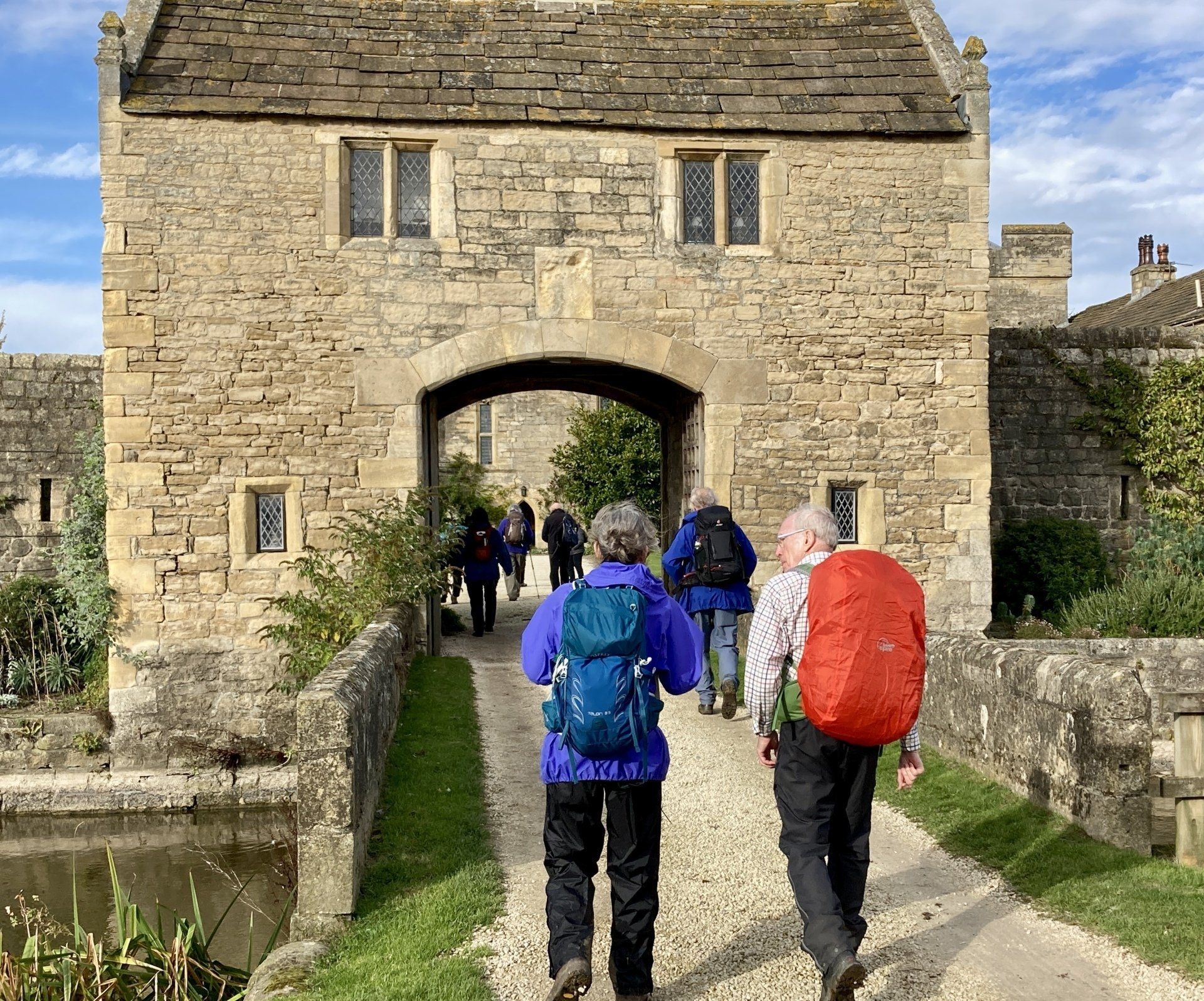
Pilgrims at Markenfield Hall, 2022
About the route
St Wilfrid became Bishop of Ripon in 658 and the Cathedral was founded in 672. As a young man he travelled to Rome and became an important advocate for the Roman tradition at the Synod of Whitby. He founded monasteries, built churches and improved the liturgy. The Ripon Cathedral Crypt is the only part of St. Wilfrid’s original Saxon church to have survived intact. This makes it one of England’s oldest Church buildings still in use. St Wilfrid was enshrined in Ripon in 710.
The St Wilfrid’s Way was established in 2016 by Stephen Habron and has been walked by a Diocesan group every year since on the weekend closest to the feast of St Wilfrid.
The Way follows old paths, public bridleways and footpaths, transformed railway lines, riverside walks, and green spaces in urban areas. It is relatively flat. The route includes historic Catholic churches, the recusant house of Markenfield Hall and the Shrine of Our Lady of the Crag in Knaresborough.
You can find out more about the Way and download the GPX file by clicking on the LEARN MORE tab in the
interactive map below
Guidance
Using the tabs in this section you can find the information you need for your pilgrimage.
The Outer Way provides practical advice about the route.
The Inner Way describes the spiritual highlights.
Using the button below you can download details of the inner and outer ways and the walking guidance and maps.
Stages: route, food & drink, accommodation and public transport
1. Leeds Cathedral to East Keswick: 10 miles (or 6.62 miles if the bus to Roundhay Park is taken)
From the Cathedral of St Anne, Leeds, you can either walk or take a bus from Vicar Lane in central Leeds to Roundhay Park. The Way goes through the park to Shadwell and then on to Wike and East Keswick.
In Shadwell where there is a bus stop for the 7S bus to Leeds. There are bus stops at the T junction in East Keswick for the X99 buses to Leeds and Wetherby. Refreshments may be available at two pubs in East Keswick: The Old Star and The Duke of Wellington.
2. East Keswick to Spofforth: 5.4 miles
From East Keswick the Way crosses the River Wharfe, passing the Carmelite Priory at Woodhall, on through the villages of Sicklinghall to the Church of The Immaculate Conception and onto Spofforth.
There are buses (No. 7) from Spofforth to Harrogate and Wetherby. There may be food and accommodation at Wood Hall Hotel & Spa. There is a pub, The Castle Inn, and a convenience store in Spofforth.
3. Spofforth to Knaresborough: 4.24 miles
The Way goes on along Crimple Beck and via the River Nidd to the Chapel of Lady of the Crag, Knaresborough.
Knaresborough has a railway station with trains to York, Harrogate and Leeds and intervening stations. There are buses to York, Harrogate and Wetherby. There are cafés, shops, pubs, restaurants and accommodation in Knaresborough.
4. Knaresborough to Ripley: 6.02 miles
Leaving Knaresborough along Waterside and the Beryl Burton Cycle way the Way joins the Nidderdale Cycle Way at Bilton to arrive in Ripley.
There are buses (No. 36) to Leeds, Harrogate and Ripon from Ripley. There is a pub, The Gardener’s Arms, near the junction with the Nidderdale Cycle Way. There are cafés, shops, pubs, restaurants and accommodation in Ripley.
5. Ripley to Ripon: 11.34 miles
At Ripley the St Wilfrid’s Way joins the Nidderdale Way along the perimeter of Ripley home park to Bedlam and onto Bishop Thornton, site of the oldest church in the Diocese. The Way goes on to Markenfield Hall passing Raventofts Hall. The last leg meets the River Skell and ends at The Church of St Wilfrid, Ripon. The Anglican Cathedral, housing the tomb of St Wilfrid, is a 10 min walk away.
From Markenfield Hall you can walk down the Hall drive to main A61. TL and walk along verge to where the No. 36 Leeds – Harewood – Harrogate – Ripon bus stops. The same bus can be taken from Ripley and Ripon. There are cafés, shops, pubs, restaurants and accommodation in Ripon.
Public transport links
Trains:
https://www.nationalrail.co.uk/
Buses:
Pilgrim people and places
The St Wilfrid Way Annual Diocese of Leeds Pilgrimage
The Diocese of Leeds has organised an annual the two-day-long St Wilfrid’s Way Pilgrimage since 2016 on the weekend closest to the Feast of St Wilfrid on 12 October. The pilgrimage begins at 8 am on Friday with Mass at Leeds Cathedral. The first day ends at Knaresborough and the second at St Wilfrid’s Church in Ripon. Pilgrims are welcome to join any part of this pilgrimage – but should first register their interest and ask for a booklet showing the full route by emailing Rowan Morton-Gledhill at communications@dioceseofleeds.org.uk
The Cathedral of St Anne, Leeds
In 1838 St Anne's Church was built and it was granted cathedral status in 1878. In 1899 Leeds Corporation compulsorily purchased the cathedral and the Diocese accepted land from the Corporation next to the original site. The current Cathedral was designed in the Arts and Crafts Gothic Revival style with no transept because of the limited site. Building began in 1901 and the cathedral opened in 1904. After renovation in 2005–2006 relics of Yorkshire martyrs, Blessed Peter Snow and Ralph Grimston, were placed in the altar.
Before you start your pilgrimage take a few moments to follow and reflect on the stations of the cross. What crosses are you carrying? We all stumble along our ways through life, and we may find ourselves the object of ridicule and pity. How will your pilgrimage change you?
The Church of St Augustine of Canterbury, Harehills, Leeds
Like many Catholic parishes in England the school opened before the church. Mass was said in the school from 1897 until a temporary church could be built in 1908. The current brick church was completed in 1936. The sanctuary was reordered in 1960 in a style which anticipated the liturgical changes that would come with the Second Vatican Council.
The Way passes the home of a community of Carmelite nuns, founded in 1969, and one of 15 such communities in Britain. The vocation of the nuns is to dedicate their lives to prayer. The sisters live, work and pray together, witnessing to the reality of God and his love for the world. They believe that prayer is a powerful and effective response to the needs of the human family.
Carmelite nuns commit their entire lives to God, as a radical response to his call. Your pilgrimage may be an opportunity to reflect on their choice in life, your own, and to spend some time in silence.
The Church of The Immaculate Conception, Sicklinghall
The current presbytery was built between 1758 and 1763 for William Middleton, of a local recusant family, to include a two-storey chapel within the house. This chapel served the wider Catholic community of the estate until in 1851 the current Church was built for Peter Middleton. The architect was Charles Francis Hansom, In 1852 the Middleton family asked the Oblates of Mary Immaculate, a French missionary order, to take up residence and they served the Parish until 2013. Inside the Church is simple and mostly white. It is now a chapel-of-ease to St Joseph’s at Wetherby and maintained by the Peter Middleton Trust.
The Immaculate Conception means that Mary lived a life that was ‘full of grace’. Where do you feel the grace of God in your life? Where might you need it?
Shrine of Our Lady of the Crag, Knaresborough
This tiny medieval Chapel was carved from the cliff face by John the Mason in 1408. It was probably built as a wayside shrine for pilgrims and as a place of quiet and prayer for the quarrymen from the nearby quarry. The legend is that John the Mason was working in the quarry when he saw that a rock fall was about to kill his son. Unable to reach him, John prayed to the Virgin Mary, the stones changed direction and his son was saved. John pledged to create a chapel in thanks for the miracle.
The Chapel ceased to function at the Reformation, but in 1916 it was reconsecrated as a Catholic place of worship after its acquisition by Ampleforth Abbey. The windows have been conserved and a figure of a medieval knight restored. In 2000 a modern statue of the Madonna and Child placed in the shrine. Since 2017 the site has been in the care of the Chapel of Our Lady of the Crag Trust.
You are following in a long history of pilgrims to this place. In the quiet you could reflect on your journey so far.
The Church of St Mary, Knaresborough
The Catholic Church of St Mary is on Bond End. A mission was established in Knaresborough by the Benedictines in the mid-18th Century. The current church was built between 1831-2, shortly after the Catholic Emancipation Act, so it was designed to look unobtrusively like a private house. The interior was partially stripped out in 1973. Then in 2001 the interior was turned round by 90 degrees, with the sanctuary re-sited on the long axis of the building and the seating rearranged in a semi-circle around this.
If you are starting your walk here, take a few moments to reflect on your hopes for the pilgrimage.
The Church of St Joseph, Bishop Thornton
NB To arrange a visit to the Church please check the parish website in advance and bear in mind that the parish priest is based ten miles away.
St Joseph’s is the oldest surviving purpose-built church still in use in the Diocese of Leeds. The presbytery was built first, about the time of the Catholic Relief Act of 1791. At first Mass may have been said in a large upper room with no windows facing onto the street. The adjacent church was built in 1809 and displays a ‘Nonconformist’ style typical of Catholic church building of the time. It has never been structurally altered or extended, and the interior retains its historic character. The site for the presbytery was given by Stephen Ingilby who lived at nearby Raventofts Hall, which had been an important refuge for Catholics during penal times.
This Church is a reminder that Christians face persecution in many parts of the world. Please keep them in your prayers as you walk on through the peaceful English countryside.
Markenfield is mentioned in the Domesday Book and its early history is closely linked with the development of the nearby Fountains Abbey, founded in 1132. In 1569 it was the rallying point for the Rising of the North, the failure of which led to its downfall. The Estate was confiscated and remained in obscurity until 1761 when it was purchased by Sir Fletcher Norton, who later became Lord Grantley, First Baron of Markenfield, a title still held by the family. Today Markenfield one of a small number of moated medieval manor houses. The Great Hall and Chapel have been lovingly restored and Mass is said occasionally. Please see the website for Mass times and opening hours.
The Church of St Wilfrid, Ripon
A Mass centre was first established in Ripon in 1850. The present church was opened in 1862 and designed by J A Hansom. In 1909 fittings from the private chapel at nearby Studley Royal were transferred to St Wilfrid’s following the death of the Marquess of Ripon, who had created the Lady Chapel in the Church. St Wilfrid’s is recognised as one of the finest Catholic parish churches in England.
As your pilgrimage ends spend some time in reflection on the experience. Have your hopes for the walk been realised, or have they been changed? What are you grateful for? Before you leave the Church, you may wish to say the following prayer:
O God, who endowed the Bishop St Wilfrid
with outstanding graces for the building up of your Church,
grant that by the help of his prayers
we may, like him, weather every storm,
discords at home and perils overseas,
and be brought at the last into the haven of your peace.
Through our Lord Jesus Christ, your Son,
Who lives and reigns with you in the unity of the Holy Spirit,
One God for ever and ever.
Amen.
Ripon Cathedral, dedicated to SS Peter & Wilfrid, is a short walk from the end of your pilgrimage. St Wilfrid’s design for a new stone church in Ripon was inspired by seeing magnificent churches in Rome with ‘catacombs’ below. The crypt held relics of the saints and was designed to be a powerful experience for pilgrims. Pilgrims go underground, to the place of burial, and then up into the awe-inspiring church above, a journey symbolising Jesus’ death and resurrection. Wilfrid was buried in the Church, but his relics were moved to Canterbury and their location is now unknown. Despite this the crypt of Ripon Cathedral is still a place of prayer, pilgrimage and inspiration 1,350 years after Wilfrid laid the foundations.
ABOUT THE DIOCESE OF LEEDS
The Diocese of Leeds was founded on 20 December 1878, with the splitting of the Diocese of Beverley, which had covered all of Yorkshire. The Diocese of Leeds was made to cover the historic West Riding of Yorkshire, while the Diocese of Middlesbrough took over the organisation of the rest of Yorkshire. In 1980, fifty parishes in the South Yorkshire region of the diocese were transferred from Leeds to the newly formed Diocese of Hallam. The parish of Howden was transferred from the Middlesbrough diocese to the Leeds diocese in 2004.
